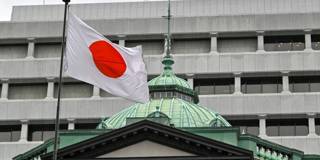The first step toward monetary-policy normalization in Japan went smoothly – with no negative market reaction or exchange-rate depreciation – and it is entirely possible that the next one will, too. But there are plenty of challenges on the road ahead.
TOKYO – Last month, the Bank of Japan took its first important step toward monetary-policy normalization. The BOJ ended its negative interest-rate policy, setting the policy rate between 0.0% and 0.1%. It abandoned yield-curve control, which had been introduced to keep the ten-year government bond yield around 0%. And it announced that it would taper off new purchases of exchange-traded funds and real-estate investment trusts, but maintain the current pace of government-bond purchases. It amounts to a momentous macroeconomic shift.
The change comes after more than a decade of super loose monetary policy by the BOJ. In 2013, then-Prime Minister Abe Shinzō introduced an economic-policy package aimed at reinvigorating the economy after prolonged economic stagnation and deflation. Within the first four months of that year, the BOJ had adopted a 2% inflation target and launched quantitative and qualitative easing (QQE). Almost immediately, the inflation rate turned positive, the yen depreciated sharply, and stock prices started to climb. Moreover, thanks to QQE, business conditions gradually improved, unemployment fell, and the gap between actual and potential GDP narrowed.
But inflation remained below the 2% target for years, not least because firms worried that raising prices (both wholesale and retail) would alienate their customers. After all, Japanese consumers had grown accustomed to deflation, and despite the BOJ’s announced target, inflation expectations remained stuck at zero. Even in 2019, when the Japanese economy was plagued by labor shortages, the inflation rate remained below the target, and wages did not rise significantly.

TOKYO – Last month, the Bank of Japan took its first important step toward monetary-policy normalization. The BOJ ended its negative interest-rate policy, setting the policy rate between 0.0% and 0.1%. It abandoned yield-curve control, which had been introduced to keep the ten-year government bond yield around 0%. And it announced that it would taper off new purchases of exchange-traded funds and real-estate investment trusts, but maintain the current pace of government-bond purchases. It amounts to a momentous macroeconomic shift.
The change comes after more than a decade of super loose monetary policy by the BOJ. In 2013, then-Prime Minister Abe Shinzō introduced an economic-policy package aimed at reinvigorating the economy after prolonged economic stagnation and deflation. Within the first four months of that year, the BOJ had adopted a 2% inflation target and launched quantitative and qualitative easing (QQE). Almost immediately, the inflation rate turned positive, the yen depreciated sharply, and stock prices started to climb. Moreover, thanks to QQE, business conditions gradually improved, unemployment fell, and the gap between actual and potential GDP narrowed.
But inflation remained below the 2% target for years, not least because firms worried that raising prices (both wholesale and retail) would alienate their customers. After all, Japanese consumers had grown accustomed to deflation, and despite the BOJ’s announced target, inflation expectations remained stuck at zero. Even in 2019, when the Japanese economy was plagued by labor shortages, the inflation rate remained below the target, and wages did not rise significantly.